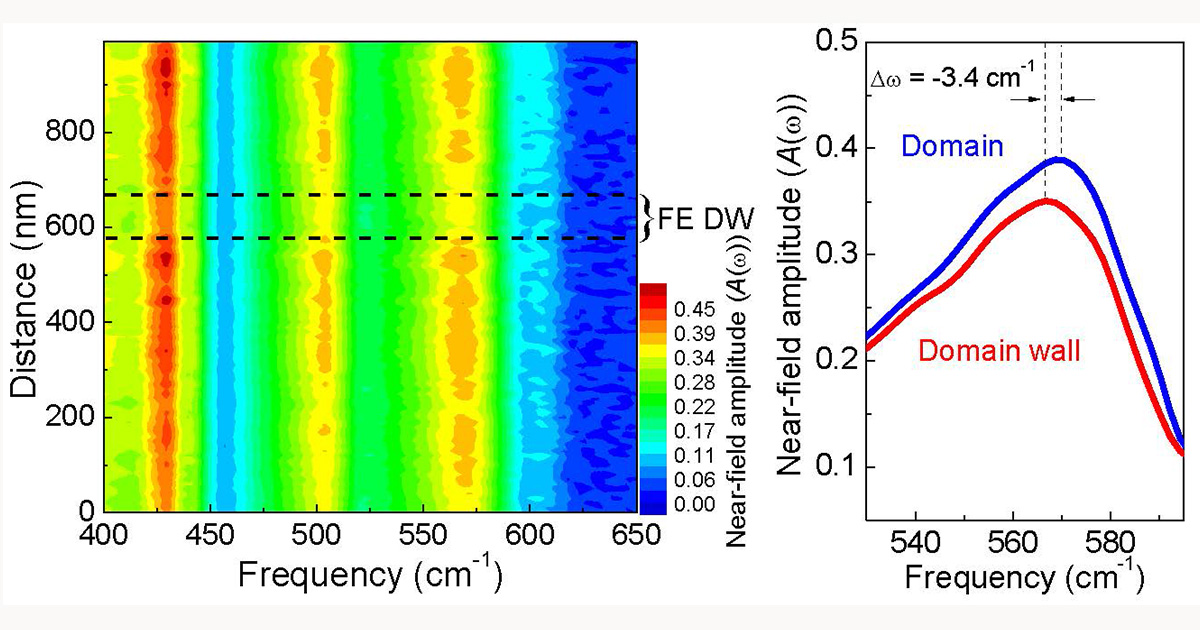Smith Breaks New Ground with Domain Wall Research
Kevin Smith, recent Ph.D. graduate from the department of chemistry, and Professor of Chemistry Janice Musfeldt have published the results of a collaborative investigation into the properties of ferroelectric domain walls. This research has generated a greater understanding of both a specific material, and domain walls in general, expanding the foundational knowledge critical to effectively using domain walls in future technologies.

Smith’s work specifically investigates the domain walls of ferroelectric materials, which have been a source of interest in the development of electronics. Efforts have been made to use domain walls as functional parts of devices as they could offer high speed memory reading and writing while requiring less energy to function.
Before ferroelectric domain walls can be successfully leveraged, researchers must develop a fundamental understanding of them and how they behave. It has long been hypothesized that these domain walls are atomically thin and conductive, but this had never been confirmed with a direct measurement at the wall. Smith and Musfeldt began investigating ferroelectric domain walls not with the intention of addressing this long-held belief, but with the goal of uncovering foundational information that could contribute to a greater understanding of these materials.
A collaboration with a group of physicists at Rutgers university, led by Henry Rutgers Professor Sang-Wook Cheong, provided Smith the material with which to begin his exploration.
“Our synthetic collaborators at Rutgers grew the material for us and provided some basic mapping on where to look for the domain walls,” said Smith. “We performed a line scan of the material with the near-field infrared microscope at Beamline 2.4 of the Advanced Light Source, or ALS, at Lawrence Berkeley National Lab. That’s when we started seeing these differences that we weren’t expecting to see.”
When thinking of a solid object, the expectation is often that the object is fairly uniform and that the components creating it are evenly distributed throughout that object. However, with the material Smith was investigating, the scan’s results were pointing toward different organizations of the material’s component parts in different regions of the material.
Smith and Musfeldt knew if they were going to uncover the source of these differences, they were going to need to investigate the material further, using the high-resolution infrared technique at the ALS to scan the material more thoroughly.
Beamline 2.4 of the ALS couples an atomic force microscope with synchrotron-generated infrared light to perform nanospectroscopy to examine materials on a much smaller scale than traditional microscopes. The microscope uses extremely sharply focused light delivered to an object at a very close distance. The response of the light as it interacts with the object is then collected and used to determine what is happening in that object.
“Using the ALS allowed us to examine these differences we were seeing in much greater detail. The material that we were studying was grown in such a way that it had two different types of metals in its A-site, scandium and lutetium. The ALS let us tease out three compositional arrangements for these materials that explained the differences. We found regions that were fairly evenly distributed, as well as both scandium-rich and lutetium-rich regions,” said Smith.
In addition to explaining the differences in domains with slightly different local composition, Smith and Musfeldt were able to determine the domain walls themselves were, in fact, much wider than traditionally believed. They also concluded that while they may have different conductivity than the surrounding regions, the domain walls were not metallic.
By successfully imaging ferroelectric domain walls, Smith and Musfeldt have accomplished something that has never been done before. As a result, they not only created a deeper understanding of these domain walls in a specific material, but also upended long-held beliefs about domain walls in general, paving the way for future innovation. Their work further highlights the importance of foundational and exploratory research in the development of future breakthroughs.

New materials are one potential path to improving existing technologies and generating new means of meeting the modern needs of people and society. Materials, however, are only useful insofar as they can be understood. Smith and Musfeldt’s work digs into the fundamental science behind a material’s properties, simultaneously creating a better understanding of that material and creating a roadmap for more effective uses for it in the future.
The full publication describing this research can be read here.
